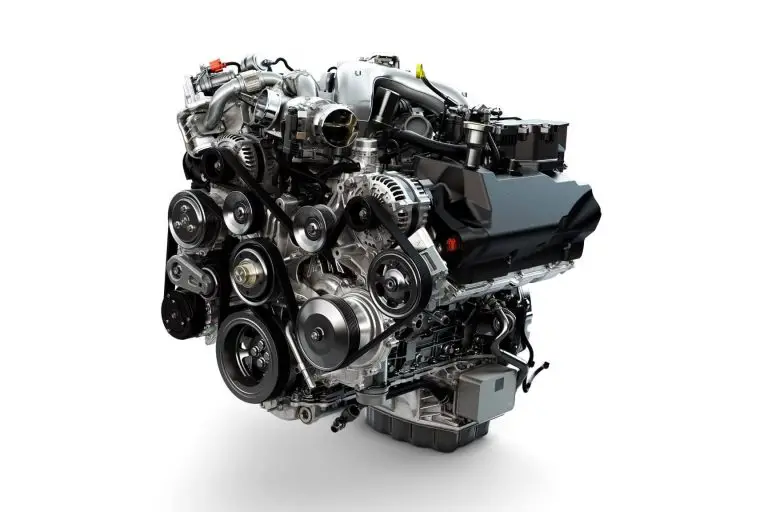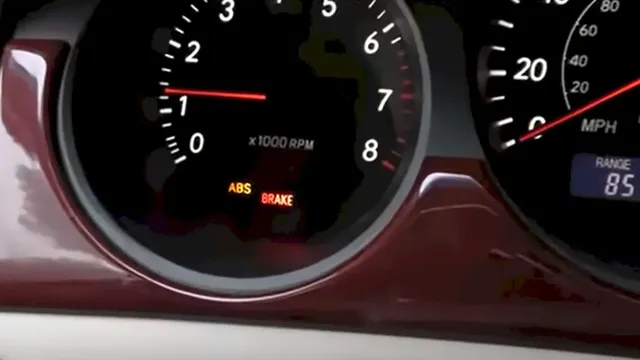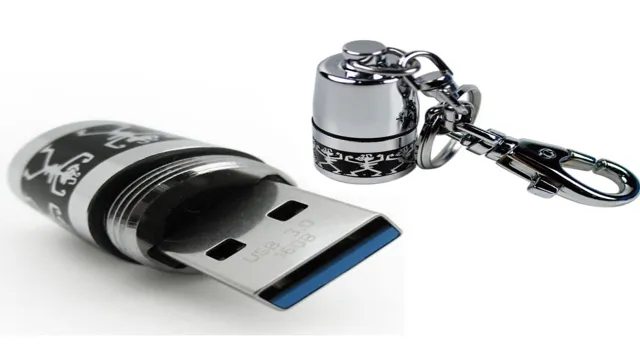6.0 Powerstroke Bad ICP Sensor (Symptoms To Detect)
The 6.0-liter Powerstroke engine, known for its impressive power and performance, has gained popularity among truck enthusiasts. However, like any complex engine, it can experience certain issues that can affect its overall operation. One crucial component in the 6.0 Powerstroke engine is the Injection Control Pressure (ICP) sensor.
The ICP sensor plays a vital role in monitoring and regulating the high-pressure oil system in the engine. It provides crucial data to the engine control module (ECM), allowing it to optimize fuel injection timing, injector operation, and overall engine performance. However, when the ICP sensor malfunctions or fails, it can lead to a range of symptoms that can impact the engine’s efficiency and drivability.
In this blog post, we will explore the symptoms associated with a faulty or failing ICP sensor in a 6.0 Powerstroke engine. From hard starting and rough idling to decreased power and increased fuel consumption, we will examine the telltale signs that may indicate an issue with the ICP sensor.
By understanding these symptoms, you will be better equipped to identify potential problems and take appropriate action to rectify them. Whether it involves sensor cleaning, replacement, or seeking professional assistance, our aim is to provide you with valuable insights and solutions to keep your 6.0 Powerstroke engine running smoothly.
6.0 Powerstroke Bad ICP Sensor Symptoms
A bad Injection Control Pressure (ICP) sensor in a 6.0 Powerstroke engine can exhibit several symptoms that indicate potential issues. These symptoms can vary in severity and may impact the engine’s performance and overall drivability. Here are some common signs of a faulty or failing ICP sensor:
Hard Starting
Difficulty starting the engine, especially when it’s cold, can be an indication of a bad ICP sensor. The sensor’s inaccurate readings can disrupt the fuel injection timing, leading to prolonged cranking or multiple attempts before the engine starts.
Rough Idle
A malfunctioning ICP sensor can cause rough or unstable idling. You may experience a noticeable vibration, fluctuating RPMs, or a lumpy idle that is inconsistent or erratic.
Loss of Power
A bad ICP sensor can result in a loss of engine power and reduced performance. The engine may feel sluggish, lack acceleration, or struggle to reach higher speeds. This can be particularly noticeable during towing or under heavy loads.
Hesitation or Stumbling
The engine may hesitate or stumble during acceleration due to improper fuel injection timing caused by the faulty ICP sensor. This can result in a delay in power delivery or inconsistent response when you press the accelerator pedal.
Increased Fuel Consumption
When the ICP sensor provides inaccurate readings, it can disrupt the fuel injection process, leading to inefficient combustion. This can result in increased fuel consumption and reduced fuel efficiency.
Check Engine Light
A malfunctioning ICP sensor can trigger the check engine light (CEL) on the dashboard. The CEL serves as a warning that the engine control module (ECM) has detected a problem related to the ICP sensor, and retrieving the specific error codes can help identify the issue.
What To Do When You Detect A Bad ICP Sensor 6.0 Powerstroke?
When you detect a bad Injection Control Pressure (ICP) sensor in your 6.0 Powerstroke engine, it’s important to take appropriate steps to address the issue. Here’s what you should do:
Diagnostic Testing
Confirm the Diagnosis: If you suspect a faulty ICP sensor based on the symptoms you’re experiencing, it’s essential to confirm the diagnosis. Consult a qualified mechanic or diesel specialist who can perform diagnostic tests using specialized equipment to accurately pinpoint the issue. They will be able to verify if the ICP sensor is indeed the cause of the problem.
Clean or Replace the ICP Sensor
Depending on the severity of the sensor’s malfunction, there are a few options. If the sensor is only mildly contaminated or obstructed, it may be possible to clean it. However, it’s generally recommended to replace the sensor with a new, high-quality one to ensure reliable performance. Use OEM (Original Equipment Manufacturer) or reputable aftermarket parts for compatibility and longevity.
Reset the Engine Management System
After cleaning or replacing the ICP sensor, it’s important to reset the engine management system. This can be done using a diagnostic scanner or by disconnecting the battery for a few minutes. Resetting the system will clear any stored error codes and allow the engine management system to recalibrate with the new or cleaned sensor.
Test and Verify Performance
Once the sensor cleaning or replacement and system reset are complete, it’s crucial to test the vehicle and verify that the symptoms have been resolved. Take the vehicle for a drive, paying attention to engine power, idle stability, acceleration response, and overall performance. If the symptoms persist, it may indicate additional issues that need to be addressed.
Seek Professional Help
If you’re uncertain about performing the diagnosis, cleaning, or replacement yourself, or if the symptoms persist after your attempts, it’s advisable to seek professional help. A qualified mechanic or diesel specialist will have the expertise and specialized tools to accurately diagnose and resolve the issue.
Is Replacing A ICP Sensor On 6.0 Powerstroke Typically Expensive?
The cost of replacing an Injection Control Pressure (ICP) sensor on a 6.0 Powerstroke engine can vary depending on several factors, including the brand of the sensor, labor costs, and your location. Generally, the price range for an ICP sensor for the 6.0 Powerstroke engine is around $50 to $200.
If you choose to have a professional mechanic or diesel specialist perform the replacement, labor costs will also be a consideration. Labor rates can vary depending on the shop’s hourly rate and the complexity of the installation. It’s advisable to contact a few reputable repair facilities or diesel specialists to get estimates specific to your location.
Additionally, if you opt for an OEM (Original Equipment Manufacturer) ICP sensor, it may be more expensive compared to aftermarket alternatives. OEM sensors are designed to meet the original specifications of the vehicle, which can contribute to their higher cost. Aftermarket sensors, on the other hand, can provide a more affordable alternative while still maintaining good quality.
It’s important to note that the cost of the sensor itself is just one aspect to consider. If you choose to have a professional replace the ICP sensor, labor costs can significantly impact the overall expense. It’s recommended to inquire about the total cost, including parts and labor, before proceeding with the replacement.
Ultimately, the cost of replacing an ICP sensor on a 6.0 Powerstroke engine will depend on various factors. It’s best to consult with a trusted mechanic or diesel specialist who can provide you with a more accurate estimate based on your specific situation and location.
How Often Should You Inspect Or Service A ICP Sensor On 6.0 Powerstroke?
The Inspection Control Pressure (ICP) sensor on a 6.0 Powerstroke engine does not typically require routine inspection or service as part of regular maintenance. However, there are certain situations where it may be necessary to inspect or service the ICP sensor. Here are some considerations:
Symptoms or Issues
If you experience symptoms associated with a malfunctioning ICP sensor, such as rough idling, loss of power, hard starting, or check engine light illumination, it’s important to have the sensor inspected. These symptoms may indicate a problem with the sensor or the high-pressure oil system it monitors. Prompt inspection and diagnosis can help identify and address any issues.
Other Engine Maintenance
During routine maintenance or repairs on other engine components, it may be opportune to inspect the condition of the ICP sensor. For example, if you’re already accessing other components in the engine bay that provide convenient access to the sensor, it may be a good time to visually inspect or test the sensor’s functionality.
High Mileage or Age
If your 6.0 Powerstroke engine has high mileage or is older, you may consider inspecting the ICP sensor as part of regular maintenance intervals. Over time, wear and tear can affect sensor performance, and periodic inspection can help detect any potential issues before they cause significant problems.
Diagnostic Testing
If you’re experiencing engine-related issues or suspect a problem with the ICP sensor, diagnostic testing can help identify the cause. A qualified mechanic or diesel specialist can use specialized diagnostic equipment to test the sensor’s functionality and determine if any adjustments, cleaning, or replacements are necessary.
Ford 6.0 ICP Sensor Test
There are two main approaches to testing a 6.0 Powerstroke ICP sensor:
1. Using a Scan Tool:
This is the most accurate and recommended method. A scan tool allows you to monitor the live data coming from the ICP sensor, displaying the Injector Control Pressure (ICP) readings in PSI. You can then compare these readings to the expected values for your engine RPM and operating conditions. This will help identify if the sensor is sending incorrect pressure signals.
2. Basic Voltage Test (Less Accurate):
This method provides a preliminary check but isn’t as conclusive as a scan tool. Here’s what you’ll need:
- Multimeter
- (Optional) Back-probe pins (safer method than directly probing the sensor wires)
Steps:
- Turn off the engine and consult a repair manual to locate the ICP sensor on your specific 6.0 Powerstroke model.
- Disconnect the electrical connector from the ICP sensor.
- Set your multimeter to DC voltage (DCV).
- With the red probe, touch the power pin on the ICP sensor connector (usually the red wire). Caution: If not using back-probe pins, be very careful not to short any wires together.
- Touch the black probe to a good ground (bare metal on the engine block).
- Turn on the key to the “ON” position (without starting the engine).
A healthy ICP sensor should display a voltage reading between 0.4 volts and 0.5 volts with the key in the “ON” position (engine not running). This indicates the sensor is receiving power from the engine computer (ECU).
Remember:
- A voltage reading significantly lower or higher than this range suggests a potential issue with the sensor.
- However, a voltage within this range doesn’t necessarily guarantee a good sensor. It only confirms it’s receiving power.
- For a definitive diagnosis, using a scan tool to monitor live ICP pressure readings is highly recommended.
Additional Tips:
- Some resources recommend applying compressed air to the ICP sensor port while monitoring voltage to simulate pressure, but this method is not advised by all mechanics and requires additional tools and expertise.
- If you’re not comfortable performing these steps yourself, consult a qualified mechanic to diagnose your ICP sensor.
What are common problems associated with ICP sensors in Ford Super Duty trucks?
Common problems associated with ICP sensors in Ford Super Duty trucks include issues such as a rough or sluggish engine performance, particularly when starting or getting the vehicle moving. A telltale sign of a problematic ICP sensor is if the engine runs better or smoother after unplugging the sensor. Additionally, an oily ICP connector can signify a faulty sensor. Monitoring the ICP, voltage, and IPR duty cycle with a diagnostic tool specific to Powerstroke engines is recommended for accurate diagnosis, as generic OBDII scanners may not work effectively on these trucks. In such cases, it is advised to replace the faulty ICP sensor with a new one, which can be purchased from a dealer, Napa, or through online platforms like eBay Motors for potentially lower costs.
What is the normal ICP voltage for a 6.0 Powerstroke?
The normal ICP voltage for a 6.0 Powerstroke with the key in the “ON” position (engine not running) is between 0.4 volts and 0.5 volts.
It’s important to remember that this voltage reading only confirms the sensor is receiving power from the Engine Control Unit (ECU). A normal voltage reading here doesn’t necessarily mean the sensor itself is functioning properly.
For a conclusive diagnosis of your ICP sensor, you’ll need to monitor live ICP pressure readings using a scan tool. This will provide a more accurate picture of whether the sensor is sending correct pressure signals to the ECU.
What is a safe ICP range?
A safe ICP range for a 6.0 Powerstroke depends on engine RPM and operating conditions. There’s no single “safe” value that applies across the board.
Here’s a breakdown to help you understand ICP readings:
Idle (Hot):
- This is typically the lowest ICP reading you’ll see.
- Expect values around 500 PSI to 600 PSI.
Cruising (Light Load):
- ICP readings will be higher than idle but should remain moderate.
- A safe range here might be around 600 PSI to 1000 PSI.
Acceleration/Heavy Load:
- During acceleration or towing heavy loads, the ICP will rise due to increased injector pressure.
- A safe range under load can be around 1000 PSI to 1400 PSI.
Excessively High ICP:
- Readings consistently exceeding 1400 PSI can indicate a problem. This could be due to a failing ICP sensor sending incorrect signals, a clogged oil filter restricting injector flow, or other internal engine issues.
Important Notes:
- These are general ranges and may vary slightly depending on your specific engine model and modifications.
- Always refer to your repair manual for the most accurate ICP specifications for your 6.0 Powerstroke.
- If you notice your ICP readings consistently exceeding safe ranges, consult a qualified mechanic for diagnosis and repair to prevent potential engine damage.
FAQ:
Q1: What are the common symptoms of a bad ICP sensor in a 6.0 Powerstroke engine?
A: Common symptoms of a bad Injection Control Pressure (ICP) sensor in a 6.0 Powerstroke engine include hard starting, rough idle, loss of power, hesitation or stumbling during acceleration, increased fuel consumption, and the illumination of the check engine light.
Q2: Can a bad ICP sensor cause starting issues in a 6.0 Powerstroke engine?
A: Yes, a faulty ICP sensor can cause starting issues in a 6.0 Powerstroke engine. It can disrupt the fuel injection timing, leading to extended cranking or difficulty starting, especially when the engine is cold.
Q3: What should I do if I suspect a bad ICP sensor in my 6.0 Powerstroke engine?
A: If you suspect a bad ICP sensor, it is advisable to have your vehicle inspected by a qualified mechanic or diesel specialist. They can perform diagnostic tests to confirm the issue and determine if the ICP sensor needs cleaning, calibration, or replacement.
Q4: How much does it cost to replace the ICP sensor on a 6.0 Powerstroke engine?
A: The cost of replacing the ICP sensor on a 6.0 Powerstroke engine can vary depending on factors such as the brand of the sensor, labor costs, and your location. Generally, the price range for an ICP sensor is around $50 to $200. It’s recommended to contact reputable repair facilities or diesel specialists to get estimates specific to your situation.
Q5: How often should I inspect or service the ICP sensor on my 6.0 Powerstroke engine?
A: The ICP sensor on a 6.0 Powerstroke engine does not typically require routine inspection or service as part of regular maintenance. However, if you experience symptoms or issues related to the sensor, it’s important to have it inspected promptly. Additionally, during high mileage or older vehicles, or during other engine maintenance, it may be opportune to inspect the sensor.
Q6: Can I replace the ICP sensor on my 6.0 Powerstroke engine myself?
A: If you have the necessary knowledge, experience, and tools, it is possible to replace the ICP sensor yourself. However, it’s important to note that working with the engine and its components requires proper precautions and expertise. If you’re uncertain, it’s best to seek professional assistance to ensure the job is done correctly and safely.
Q: What is a good ICP reading?
A: There isn’t a single “good” ICP reading for a 6.0 Powerstroke because it depends on the engine’s operating conditions. Here’s a breakdown to help you understand what ICP readings mean:
- Idle (Hot): This is typically the lowest reading, around 500 PSI to 600 PSI.
- Cruising (Light Load): ICP readings will be moderate, around 600 PSI to 1000 PSI.
- Acceleration/Heavy Load: During these situations, the ICP increases due to higher injector pressure. A safe range might be 1000 PSI to 1400 PSI.
Q: What boost levels are considered normal for a stock Ford Super Duty truck with a 7.3 engine?
In a stock Ford Super Duty truck with a 7.3 engine, typical boost levels would fall within the range of 14 to 16 pounds. This includes the condition of the vehicle being mostly stock, with the exception of modifications like a baldwin large round air filter and a straight pipe.
Q: What are the symptoms of a bad ICP sensor in a Ford Super Duty truck?
Common symptoms of a bad ICP (Injection Control Pressure) sensor in a Ford Super Duty truck include issues with engine performance such as rough idling, stalling, surging, decreased fuel efficiency, and lack of power. Other signs may include illuminated warning lights on the dashboard, like the check engine light. If you suspect your ICP sensor is faulty, it is advisable to visit your dealer, an auto parts store such as Napa, or consider buying a replacement sensor online for cost savings.
Q: What diagnostic tools can be used to monitor ICP, voltage, and IPR duty cycle on a Powerstroke engine?
To monitor ICP, voltage, and IPR duty cycle on a Powerstroke engine, a Powerstroke compatible diagnostic tool is recommended. Generic OBDII scanners are not suitable for these trucks. Alternatively, monitoring can be done using an SCT programmer and Livelink software in conjunction with a USB cable and a laptop running on Windows XP.
Q: Are there any voltage readings or parameters I can monitor with an OBDII scanner to check the ICP sensor?
With a Powerstroke compatible diagnostic tool, you can effectively monitor parameters such as ICP, voltage, and IPR duty cycle. However, it is important to note that generic OBDII scanners are not suitable for monitoring these specific readings on these trucks.




